This article was originally published on bookslive.co.za
“I’m not trying to do anything except make pictures that challenge Roger Ballen” – a conversation with Roger Ballen
If you’re familiar with Die Antwoord, images of an anomalous Johannesburg, or raw photos of South Africa’s rural Afrikaans communities, you’ve probably come across Roger Ballen.
Ballen, whose photographic career spans over forty years, recently released Ballenesque, a monograph consisting of his oeuvre and previously unpublished images. ‘Ballenesque’ has become synonymous with his style which, over the past twenty years, has moved from being partly documentary to one that incorporates elements of drawing, painting, installation, and video.
As the photographic artist himself explains in his deep, measured voice: “This integration of medias has allowed me to create an aesthetic that is referred to as Ballenesque.”
I’m seated across Ballen in his large, well-lit office in Parktown, Johannesburg. The walls are adorned with framed images of his work. Stuffed animals, including a baboon, a serval and an aardvark, greet you once you enter the office space. He promises to acquaint me with the office rat (Stoffel).
As Ballen’s mother was involved with the Magnum Agency in New York, Ballen – who holds a PhD in geology – was introduced to photography at a young age, publishing his first book, Boyhood, at 28.
Boyhood consists of black and white images of boys, comprised mostly of a trip made from Cape Town to Cairo between 1973 and 1978.
Ballen describes Boyhood as “a trip into my own childhood. So all my pictures from those days had a psychological edge to them, an existential edge.”
Existentialism features heavily in Ballen’s work and he is renowned for having stated that “nothing” is the most profound word in the English language.
“Well, where do you come from, and where are you going?” Ballen reasons. “That’s the quandary everybody faces, that nothing can happen in a second from now. Then what?”
And does he think that’s a driving force for people?
“Ja,” the native New Yorker responds. ”That’s the death instinct. It’s the thing that drives everything on the planet.
“That’s the purpose of what I’m doing. It’s the most fundamental force in anything alive, it’s dealing with the survival instinct … the need to stay alive in a hostile environment, especially in nature.”
“Hostile environments” and “nature” reminds me of Dorps, Ballen’s photographic series of dorpies shot in and around rural South Africa – not quite as Ballenesque as his more recent work, yet still stark, gritty, and – in classic Ballen style – black and white. Did Ballen’s profession as geologist propel him to study rural South Africa?
Ballen came back to South Africa in 1982, after having completed his PhD in geology, and at that time “there wasn’t a place on the planet that was more advanced in mining, metallurgy, mineral exploration.
“It was an interesting country and the people here at the time were very hospitable to me and it felt like I could make a difference here, I guess.”
Ballen made a gradual move to shooting poor, marginalised Afrikaans communities in South Africa, as portrayed in Platteland.
Platteland was photographed between 1986 and 1994 – pivotal dates in our country’s history, with ’86 defined by the declaration of a state of emergency, and ’94 the advent of democracy.
How did an American geologist-cum-photographer “convince” armblankes to be subjects of his work during these turbulent years?
The conversation is interrupted by lively cooing from the speckled dove in a cage in the corner of his office, later introduced to me as Icarus.
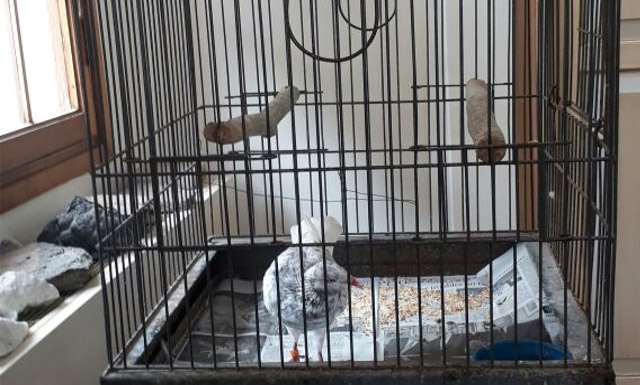
“He likes you,” Ballen says, eyes drifting towards the dove, a look of affection crossing his face. “He’s listening, he’s saying ‘watch yourself there!’” [Cue hearty laughter.]
Photographing strangers can “happen quite spontaneously. You might find somebody in a shop and you talk to them and they invite you over for tea,” Ballen furthers.
“I always have had a good relationship with the people that I have photographed over the years. I can hardly remember having a negative or hostile experience in anyway.
“Most importantly, I have always believed that the subject should benefit in some way from the experience whether it be my buying them food, clothing, or medicine, paying them for their work, or just listening and empathizing. Without any doubt, I feel that the people that I have worked with over the years have been much more hospitable towards me that many of the well-off people that I have encountered.
“I didn’t necessarily go there with somebody to make fun of people and cause issues; I’m still friendly with a lot of these people 30 years later. They message me, or call me. I can feel it in my pocket,” he says patting his trouser pocket in which his phone had just vibrated.
Photography isn’t just a matter of “finding somebody who you think has an interesting face and taking their picture,” he continues. “It’s very, very difficult and in fact it takes a great photograph that has some lasting power. For something to rise above the ‘normal’, to have some sort of effect on people’s subconscious mind, is very difficult.”
The struggle to capture photos with lasting power is perpetuated by the billions of images we’re confronted with on a daily basis and an inability to “separate the more artistic level of photography from the more mundane,” Ballen states.
This begs the question whether social media platforms are nullifying or destroying photography.
“I use these things myself. I Instagram. It’s a means of exchanging information. The problem is the evaluation of these images.”
PSA, Kim K fans: you better stop reading here…
“The Kardashian woman takes a picture of her shoe on the floor and it gets two million hits. Or her cigarette that she just smoked and it gets five million hits. But the picture’s horrible. My dog could almost take the picture. But it had five million hits!” he incredulously declares.
“Monetary value, or the “like”-value, effects how you see the picture. It’s very confusing.”
Ballen is uncertain about whether this problem can be solved or addressed productively.
“You know I’m a geologist – see the rocks there?” he asks, pointing towards a collection of rocks aligned on the window sill, “that goes to a lab and the lab will tell you exactly if you want to know how much copper is in a block. Look at this picture,” he proceeds, indicating to one of his framed images, “is it good or bad? Do you like it? That one doesn’t like it. So you have this enormous subjectivity involved in this media. This is why it’s a confusing subject.”
Since 1997, the year in which Ballen’s Outland project was produced, his work has progressed into a style described as “documentary fiction”.
Ballen defines “documentary” as en external experience and regards “fiction” as something your imagination creates. The images in The Outland, Boarding House and Shadow Chamber feature Johannesburg’s “fringe” characters, often wearing masks, captured in confined spaces, drawings and marks etched on the walls. A sense of the abnormal and outlandish is created.
Since we, as humans, occupy space both physically and mentally, I’m curious to know whether Ballen intentionally shoots these peripheral people in confined spaces as means to capture the place where the mental “meets” the physical.
“The first thing you have to realise is that whatever I’m saying, I’m saying visually,” the artist answers. “I’ve always stated that if I can talk about the picture in precising words, it’s probably a bad picture. That’s the first step. That’s what differentiates me from most South African photographers – I’m not a political photographer; I’m psychological.
“Dealing with aesthetics and, more importantly, trying to reach the subconscious mind and transform the subconscious mind of myself and expand the subconscious of myself and hopefully others… The issue is I’m not trying to do anything except make pictures that challenge Roger Ballen.”
His work certainly is psychological, but it isn’t his intention to elicit a certain response from audiences, questioning the meaning of “the response”.
“What is a response if somebody finds them disturbing and humorous at the same time? What is the response? What would you call that?
“They’re mindscapes,” he says of his photos.
“They’re real scapes and they’re mindscapes and the reason they have an effect on you is they have an ability to enter your mind and your mind doesn’t … your mind is unclear how to react to them.
“The pictures, to have to have an effect, have to break through your repression, unleash your repression, and reach some so-called “core place”. The issue is that the pictures have to have an ability to get at somebody and challenge people’s status; that’s my goal.”
Ballen explains that his photos present a part of your being which you’re unaccustomed to.
“‘Disturbing’ is not really the right word – they’re unleashing. They’re presenting a segment of yourself, which you’re not used to you. It’s like if you’re looking in a mirror, especially when you’re tired or you’re sick – you get a little bit of a shock, you know? And you say “Shit, is that me? I can’t believe it”.”
In the accompanying video for Outland, shot by local filmmaker Ben Jay Crossman, one of the “fringe” characters to feature in the work, a man named Stanley who catches and releases rats on a daily basis, tells Ballen how “Ben can’t believe his eyes with all these people around here.” Is this something people often comment on? Has he ever been asked if he attempts to “normalise” the “abnormal”?
“I’m not very clear about normality at all. I’m not convinced about normality. I’m not convinced about abnormality, either. These terms you used – in a way to protect people’s subconscious minds, they classify abnormality and normality. And if somebody is abnormal they don’t have to deal with it in certain ways. Obviously I’m not talking about the extremes, there are a lot of people who have serious biological, physiological problems…”
Ballen dislikes the claims that he’s appropriating or exploiting the people he photographs as, for the last 15 years, he’s “finally had a face in the picture. So when we talk about Roger Ballen’s work, like in the last 10 years almost, it’s always been about animals. What does he think? [This question is asked whilst indicating towards Icarus.] He likes it? He’s fed up with these comments. He’s thinking “why are you always talking about people?” We’re trying to use our own words to define his reality and you don’t understand his reality, you never will.”
Although Ballen does not like to use the word “inspiration”, he discloses that “if somebody pointed a gun to my head, I would probably say [Samuel] Beckett.” This in response to his work having been compared to Diane Arbus’s, something Ballen disputes; especially the type of work he did in Platteland.
“There was an aspect of people living in these places who were marginalised, living on the edge, who weren’t coping, who were strange … there was some correspondence between what Diane Arbus was doing and what I was doing. But at the beginning of Outland, about ’97, there was a real divergence between what she was doing and what I did. Outland was focused on human absurdity; Diane Arbus wasn’t interested in that. Roger Ballen Theatre started to come about; Diane Arbus wasn’t interested in that.”
Ballen’s love of – and appreciation for – animals is evident in his work, and he has two books dedicated to animals, including Asylum of the Birds. Absentmindedly waving in the direction of the dove as I ask what it is about birds that intrigues him, he tells me “Icarus. His name’s Icarus.
“My first-grade teacher was obsessed by Greek mythology. In fact, the first book that I bought without my parents intervention was the Iliad and the Odyssey. My favorite character in Greek mythology was Zeus as he was the ultimate God. I remember climbing Mount Olympus and feeling his presence.
“Greek myths are really revealing,” Ballen continues. “They’re like dreams. There was something nice about being able to … reassuring to call a beautiful bird after something special about doing it. The name has a very strong, warm, positive feeling in my mind. To use the word is actually soothing in a way. Instead of calling him some pseudo-yuppie name.”
Smiling, he rhetorically states “He’s a nice bird, hey?”
Ballen owns “a lot” of birds, and has “some place where I keep about 300 owls. But not as pets. I like all animals.”
Rats, especially, feature prominently in his photos. Why does he finds this singular rodent so remarkable?
“I believe the rat is the most intelligent species on the planet based on their brain size. I own many as pets and am amazed at their ability to learn,” he responds.
“The rat lives everywhere on the planet, can eat almost anything, and is able to survive in the most difficult of environmental circumstances. In western cultures rats are looked down upon, but ultimately, they are a product of nature and no better or no worse than any other species.”
Besides rats, Ballen’s animal photography includes images of pigeons, snakes, pigs, and goats. Ballen attributes his photographing of these “ordinary” animals to the setting of his photos.
“All the pictures I take are on the inside … inside buildings. So you wouldn’t necessarily find a tiger or a rhinoceros inside some room in Johannesburg. That really would be a little bit strange. A lion inside a room … somebody asleep on top of a lion,” he replies, chortling.
His interest in taking pictures of animals and in animal psychologies started as a teen, he adds.
“I’ve always been interested in the animal side of the human behaviour and the primitive side of the mind and the relationship ultimately between humans and animals and how this relationship is distorted by contemporary life.”
Ballen critiques Disney, citing that one of the reoccurring motifs – “all the animals love the people, and the people love the animals, and they get along” – creates the wrong idea of the historic relationship between animals and humans.
“There’s a fundamental fear of nature; this is part of the genes of the species. There’s fundamental dislike of nature. We need to control nature because of this genetic evolution of the species. So in fact there’s no real harmonious relationship between humans and nature.”
In the majority of his photos featuring animals, Ballen will have the person in the photo holding or cuddling the animal. To what extent does he “direct” a photo?
“Every picture is different, first of all. There’s always this relationship in my pictures between what could have been there, what is spontaneous, and what I could have put there. So you always have that so-called tension in a lot of the pictures.
“I always say the pictures are interactive, and that’s all you can say. And ultimately they’re pictures that Roger Ballen created; images that nobody else could create. So Roger Ballen is a Roger Ballen world, so yes, they’re all – they exist as pictures as a result of Roger Ballen. That’s it. That’s what they are. They don’t exist spontaneously. They don’t exist spontaneously because they’re ways of organising the world through a camera and through your mind.”
One can’t speak to Ballen without enquiring about his collaboration with Die Antwoord, considering he directed the music video for the zef-rap-rave duo’s 2012 hit, I Fink U Freeky.
Ballen’s aesthetic is palpable in the video. Think Ninja in a loincloth. Yo-Landi wearing black contact lenses. The walls covered with unsettling drawings and marks. And rats. Many, many rats.
Unfortunately Ballen can’t remember whether any of the rats were his own.
“That’s a really good question,” he replies, brow furrowed. “I think they were … I think they were my rats. But Yo-Landi had some rats at the time. I introduced her to rats.”
Zef culture, as popularised by Die Antwoord, and Ballen’s style wouldn’t necessarily be described as congruent; it was with their introduction to Ballen’s Outland that “they stopped doing whatever they were doing and reinvented themselves as Die Antwoord. It had a major effect on them,” Ballen explains.
“My aesthetic hit their subconscious mind in some way that they saw something in the work that inspired them to move in another direction. Yo-Landi contacted me, they wanted to show me their videos, they wanted to do a project with me.”
This correspondence went on for a number of years and when I Fink U Freeky was produced it went “totally viral. Totally viral.” (The video currently has over 107 million views. Sjoe.)
It’s surprising that Ballen’s art features in a music video, as his response to an interviewer enquiring what music one should listen to while perusing his work, was “no music”. Did he ever imagine that he would collaborate with musicians?
“I didn’t have many expectations, this happened all spontaneously. If music is used as a vehicle with somebody with more musical skills than myself to create a … Extending the reality of my imagery and my aesthetic, well that’s great. I’m happy … The most important thing I saw was the power of the video. Since then … I don’t know if you saw Asylum of the Birds?”
I answer in the affirmative.
“And The Outland video, and The Ballenesque video. I don’t think I’d ever have done that if it wasn’t for I Fink U Freeky. I didn’t realise how my imagery and what I’m doing could be transformed to moving image. This was a really important event in my career.”
In light of Ballen’s recent The Theatre of Apparitions video, one wonders whether he’s considering doing similar audiovisual work in the future.
“Definitely. I have a new project now,” is the enthusiastic response.
“It’s like this animated, well, it’s like a cartoon-figure I’ve been working with in the photographs. The photographs are animated. So this cartoonish type of character that’s involved in situations most people would not do, or can’t do. So it’s symbolic of liberation and mischievousness.”
Is he by any chance extending himself into this character with “free reigns”? Would he describe it as a liberating process?
“Ja … ja. I guess,” he thoughtfully replies, before candidly stating “I’m not that repressed.
“To me it’s more of a humorous activity. It’s a creative activity, the characters are liberating me in a way. It’s an enjoyable process.”
Compared to his past work, which is very much psychologically challenging, will he describe the experience of this project as more enjoyable?
“This animated series isn’t as complex as some of the others, but I enjoy them all. I wouldn’t do them if I didn’t enjoy them. Because I never really try to make pictures for other people, it’s always been my own personal goals. When it’s been satisfying … It’s gratifying that you know people ultimately must have responded to what I’ve done; it’s great as an artist – what more can an artist ask for, in a way. It’s pretty deafening if there’s no response.”
Five final questions
You’ve been living and working in the surrounds of Johannesburg since the 1970s. Could you describe Johannesburg, or what Johannesburg means to you?
Well, you know, I have a picture in the Apparitions book, it’s called Divided Self. Joburg, in a way, has that aspect to it. On one side it represents a social-political-cultural reality and on the other side is another social-political reality. And they don’t really harmonise really well. Back to what we were talking about, I would say Joburg is symbolic of the divide of itself.
As an artist you combine fact and fiction; as a reader, do you prefer to read fact or fiction?
I’m very multi-dimensional in terms of my history of reading and I’m quite well educated. Everything – theatre to fiction to philosophy; the poetry, the geology, economics. It’s really difficult because I have such a range of things I’ve been interested in over the years so I can’t really say if it’s fact or fiction, it’s a whole range of things. Is theatre fiction or is it fact? Theatre, by its nature, is almost totally documentary; partly fictional. I like things with interaction between fact and fiction.
Can you give me an example?
Well, you take something like [Joseph] Conrad’s work. He spent time on boats, travelling all over the world … He transformed it into his own world. It’s hard to know what was really the place, and what was his memory.
Yo-Landi Visser once described you as “the weirdest person I’ve ever met”. I think that’s such a compliment…
People make these comments, like “weirdest person”, “that picture is disturbing”. I’m happy; it’s great. I guess the worst thing they could say is that the work is boring.
Icarus’s lively cooing interrupts the conversation once more.
What do you think? [This question is posed to Icarus.] It’s the most he’s ever talked. He’s really enjoying what’s going on here. He’s really liking what we’re doing here. He really never does this much talking. He’s a quiet bird. We had these doves, these laughing doves, and the rest of the staff here … it was driving them crazy, so I took them out of the office.
Have you ever been accused of being boring?
No, I hate to disappoint you.
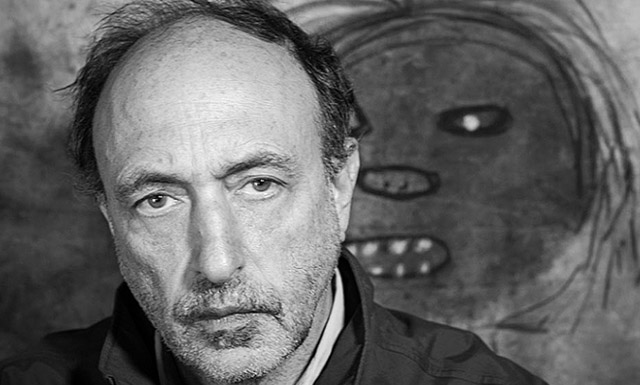
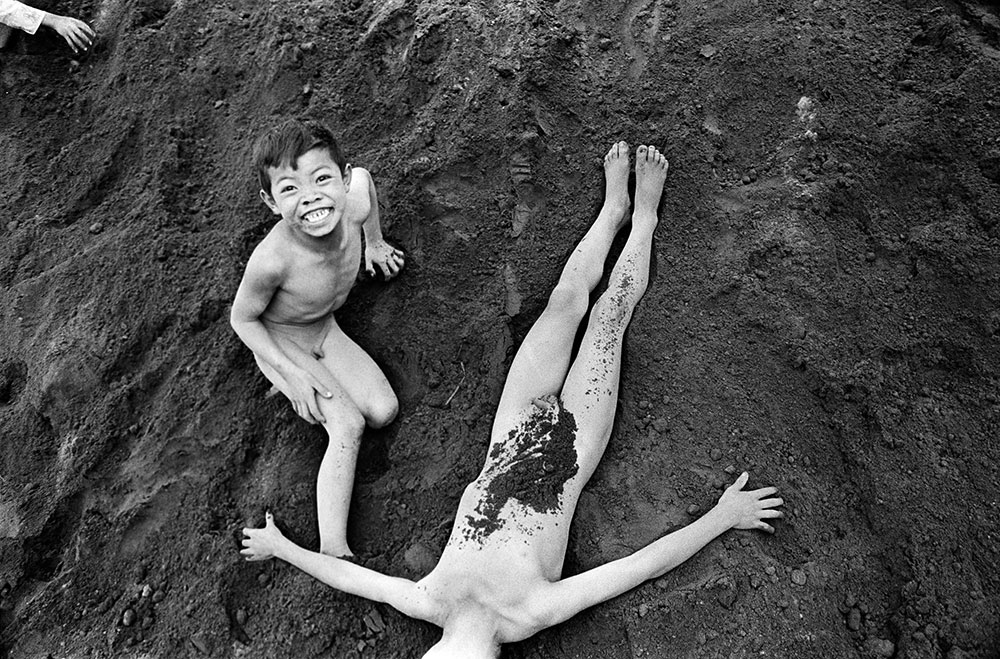

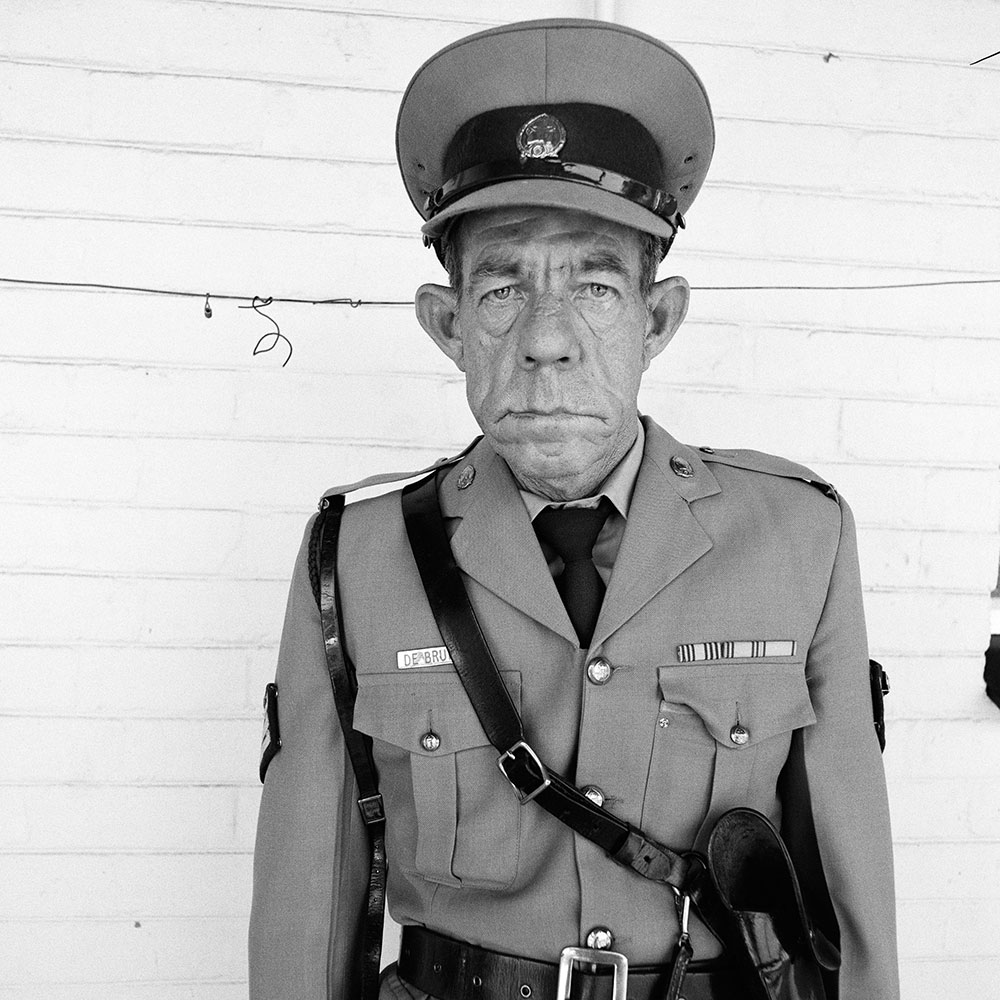
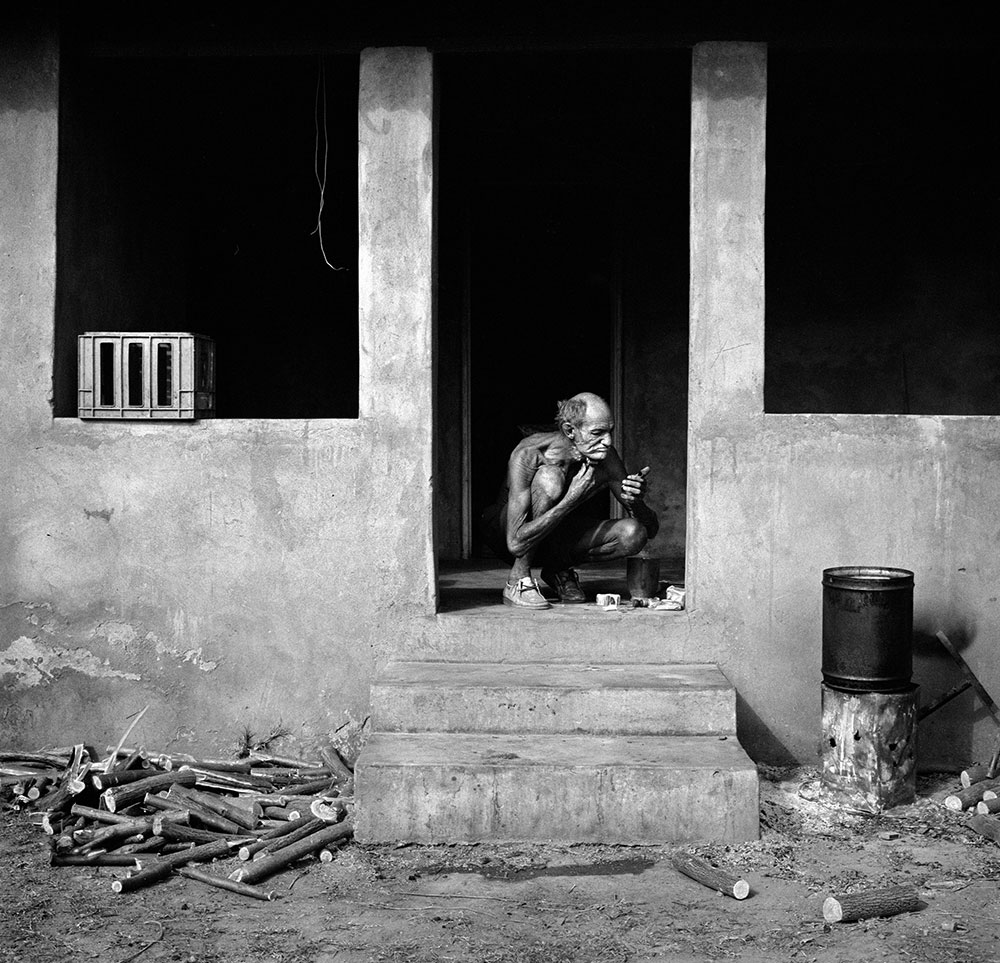
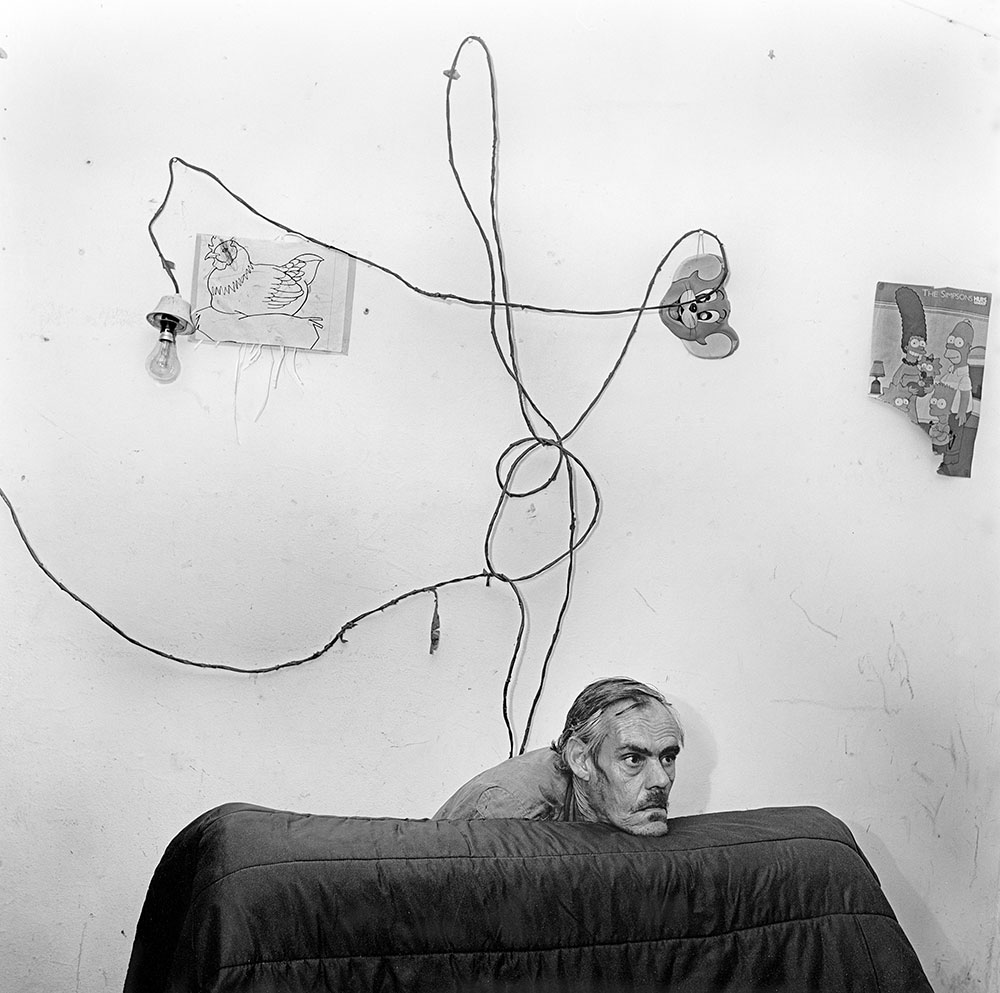
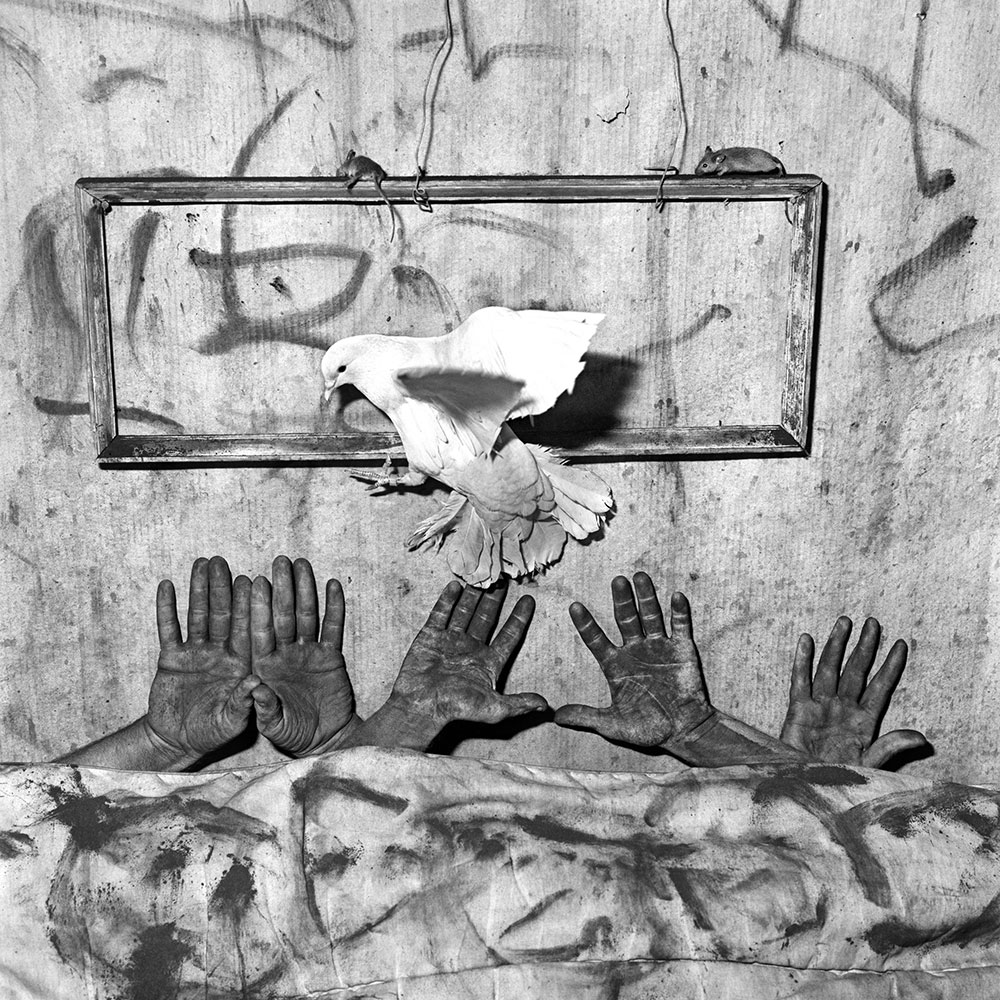

Comments are closed.